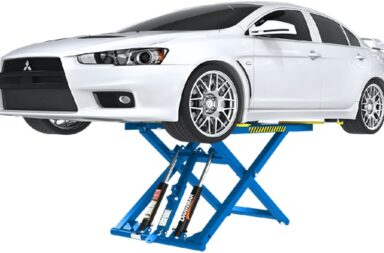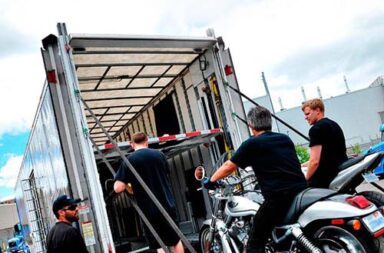There’s something captivating about the timeless elegance and charm of classic cars. Maybe it’s the nostalgia they evoke, or the intricate details and design that make them stand out in a sea of modern vehicles. But for many car enthusiasts, restoring classic vehicles is more than just a hobby – it’s a passion. From vintage muscle cars to retro convertibles, classic car restorations have become a thriving industry, with experts and enthusiasts alike putting their skills to the test to bring these timeless beauties back to their former glory. In this article, we’ll take a closer look at the beauty of classic car restorations, exploring the techniques, challenges, and rewards that come with restoring these beloved vehicles. So buckle up, and let’s embark on a journey to uncover the magic of classic car restorations.
The History of Classic Cars
Classic cars have a rich history that dates back to the early 1900s. The first cars were designed with simple mechanics and basic features, but as technology advanced, so did the design and functionality of cars. The 1920s and 30s saw the rise of luxury cars, with brands like Rolls-Royce and Bentley leading the way. The 1950s and 60s saw the birth of muscle cars, with brands like Ford, Chevrolet, and Dodge producing iconic models like the Mustang, Camaro, and Charger. The 1970s saw the introduction of the first supercars, with brands like Lamborghini and Ferrari producing cars that were faster and more powerful than anything that had come before.
Today, classic cars are highly sought after by collectors and enthusiasts who appreciate their timeless design and historical significance. Classic car restorations have become a way to preserve these beloved vehicles, ensuring that they are not lost to time.
Benefits of Classic Car Restoration
Restoring a classic car is not only a labor of love but also a smart investment. Classic cars are appreciating assets, with many models increasing in value over time. In addition, restoring a classic car allows you to customize it to your liking, adding modern features while still preserving its original charm. The perfect options for restorations are cars like the old land rover defender or the Jaguar E-Type.
Restoring a classic car can also be a rewarding experience that brings a sense of accomplishment and pride. It requires patience, skill, and attention to detail, but the end result is a beautiful and functional piece of automotive history.
Challenges of Classic Car Restoration
Restoring a classic car is not without its challenges. Finding the right parts and materials can be difficult, especially for rare or obscure models. In addition, the cost of restoration can add up quickly, with labor, parts, and materials all contributing to the final bill.
Another challenge of classic car restoration is the level of expertise required. Restoring a classic car requires a deep understanding of automotive mechanics, as well as specialized tools and equipment. Without the right knowledge and experience, it can be easy to make mistakes that can damage the vehicle.
Steps to Restore a Classic Vehicle
Restoring a classic car is a complex process that requires careful planning and execution. Here are the basic steps involved in restoring a classic vehicle:
- Assessment: The first step in restoring a classic car is to assess its condition. This includes inspecting the body, engine, interior, and electrical systems to identify any damage or wear.
- Disassembly: Once the assessment is complete, the car must be disassembled to its component parts. This allows for a more detailed inspection and makes it easier to clean and restore individual parts.
- Cleaning: All parts of the car must be thoroughly cleaned to remove any dirt, rust, or debris. This includes using specialized cleaners and solvents to remove grease and oil.
- Repair and Restoration: The next step is to repair or replace any damaged or worn parts. This may involve welding, sanding, or painting parts of the car to restore them to their original condition.
- Reassembly: Once the repairs and restoration are complete, the car can be reassembled. This includes installing new parts, such as brakes, tires, and suspension components.
- Testing: After the car is reassembled, it must be tested to ensure that it is functioning properly. This includes testing the engine, transmission, and electrical systems.
- Final Touches: Finally, the car can be given its final touches, such as detailing and polishing to give it a showroom-quality finish.
Tools and Equipment Needed for Classic Car Restoration
Restoring a classic car requires specialized tools and equipment, including:
- Welding equipment
- Sandblasting equipment
- Paint sprayers
- Body shop tools
- Engine rebuild tools
- Electrical testing equipment
- Lifts and jacks
In addition, restoration projects require a significant amount of space and access to electricity and water. Many restoration experts have dedicated workshops or garages where they can work on their projects.
Common Mistakes to Avoid During Classic Car Restoration
Restoring a classic car is a complex process that requires attention to detail and a deep understanding of automotive mechanics. Here are some common mistakes to avoid during classic car restoration:
- Rushing the process: Restoring a classic car takes time and patience. Rushing the process can lead to mistakes and lower the quality of the final product.
- Using incorrect parts or materials: Using the wrong parts or materials can lead to compatibility issues and damage to the vehicle.
- Over-customization: While it’s important to add modern features to a classic car, over-customization can detract from its original charm and historical significance.
- Neglecting safety: Restoring a classic car can be dangerous, especially when working with welding equipment or other power tools. It’s important to prioritize safety and wear appropriate protective gear at all times.
Tips for Maintaining a Restored Classic Car
Maintaining a restored classic car is just as important as the restoration itself. Here are some tips for keeping your restored classic car in top condition:
- Regular maintenance: Regular oil changes, tire rotations, and tune-ups can help keep your classic car running smoothly.
- Storage: Storing your classic car in a dry, climate-controlled environment can help prevent rust and other damage.
- Driving: While it’s important to enjoy your classic car, it’s also important to be mindful of how often you drive it. Excessive driving can lead to wear and tear on the vehicle.
- Detailing: Regular detailing can help keep your classic car looking its best, both inside and out.
Famous Classic Car Restorations
Over the years, many famous classic cars have been restored to their former glory. Here are a few notable examples:
- The Batmobile: The iconic car from the 1960s Batman TV show was restored by a team of experts in 2013, using original parts and materials.
- The DeLorean: The car made famous by the Back to the Future movies was restored by the original manufacturer in 2017, using a combination of original and modern parts.
- The Bullitt Mustang: The 1968 Ford Mustang used in the classic movie Bullitt was restored by a team of experts in 2018, using original parts and materials.
These famous restorations serve as a testament to the beauty and historical significance of classic cars.
Conclusion – The Timeless Beauty of Classic Cars
Restoring a classic car is a labor of love that requires patience, skill, and attention to detail. But the end result is a beautiful and functional piece of automotive history that can be enjoyed for years to come. From vintage muscle cars to retro convertibles, classic cars have a timeless elegance and charm that is unmatched by modern vehicles. So whether you’re a seasoned restoration expert or a first-time enthusiast, there’s no denying the magic of classic car restorations.


